Porto#
by Sergey Shandin and Stas Sedov,
members of the AirPano Team that is a member of the global-geography Consortium.
21 October 2016
with kind permission of AirPano
The name of the city of Porto eventually influenced the name of the whole country. At the time of the Roman Empire it bore the name "Portus Cale", so that's where the country's name — Portugal — came from.
Porto is a classic city of the old Europe, just as it is shown in Hollywood movies. The tight cobweb of streets, buildings of different shapes and sizes, narrow lanes and ancient churches. But the genuine architectural landmarks of the city are the bridges. The Maria Pia (Ponte Dona Maria Pia) railway bridge was built in 1876-1877 upon the project of Gustave Eiffel, and was one of the first projects of the famous French architect. Later, during the construction of the worldly known tower, he used the constructive solutions applied at the creation of this bridge. Now it does not function: modern trains are too heavy and fast for it, so a new railway bridge called the St John's Bridge (Ponte de São João) was built to replace it.
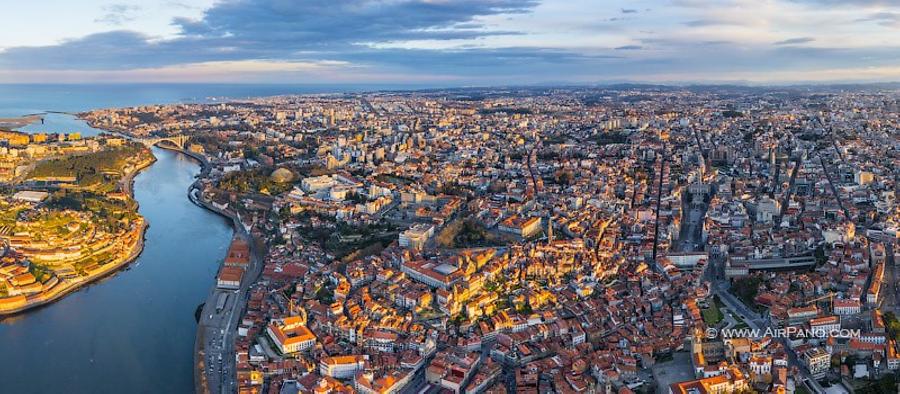
The Dom Luís I bridge was built by a partner and an apprentice of Gustave Eiffel — Théophile Seyrig in between 1881 and 1886. It has a double-decked metal arch construction: the first deck is for cars, the second — for trains and trams. Pedestrians can use both of them.
We couldn't find a suitable room in a hotel, so we decided to rent a cozy apartment located in the St Catherine Street. It is a pedestrian street known for numerous shops and cafes. Quite a few people were in the street, but still it was a challenge to find a parking lot around. A major advantage was a personal small patio where we could relax in the evening (in case we had time), the disadvantage was the absence of the elevator, so we had to carry all the luggage up the beautiful 19th-century wooden staircase.
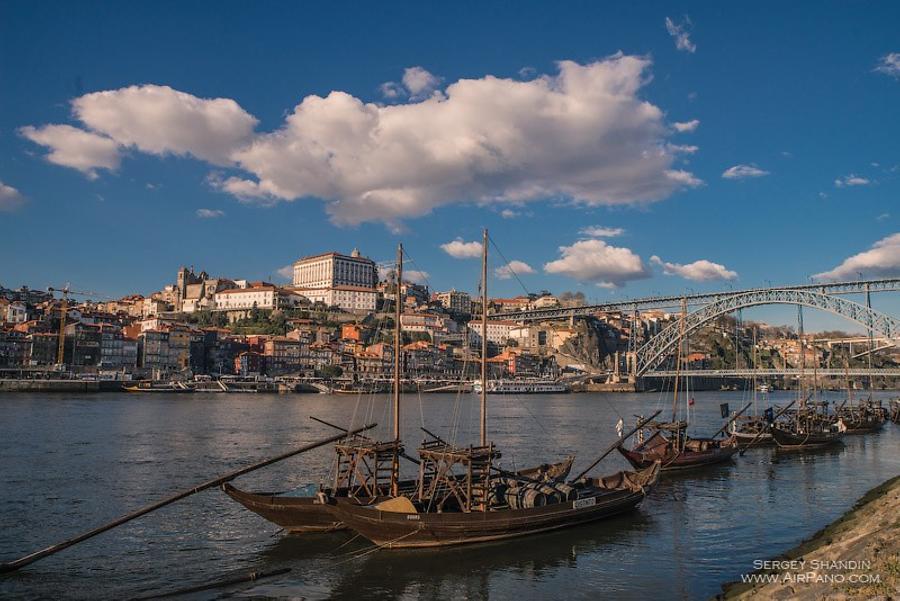
Porto welcomed us with rainy weather. There was no point in trying to launch our drone, so we decided to spend our time exploring the city and headed to the Torre dos Clérigos, which is another significant symbol of Porto together with the mentioned bridges. The Torre dos Clérigos, being 75-meters high, is the highest church tower in the whole country. It is clearly observed not only from any point of the city, but also from the direction of the sea. Previously, it was a good landmark for the ships approaching the harbour.
As we climbed 225 steps of the staircase, we found ourselves on the observation deck of the tower. A spectacular landscape spread before us, we could enjoy the view of the entire city of Porto. Tiled roofs of houses, a strict building of the 13th-century cathedral, an embankment of the Douro River, cobwebs of the streets... It began drizzling, but even damp streets of Porto looked incredible. All we were left to do was waiting for the weather.
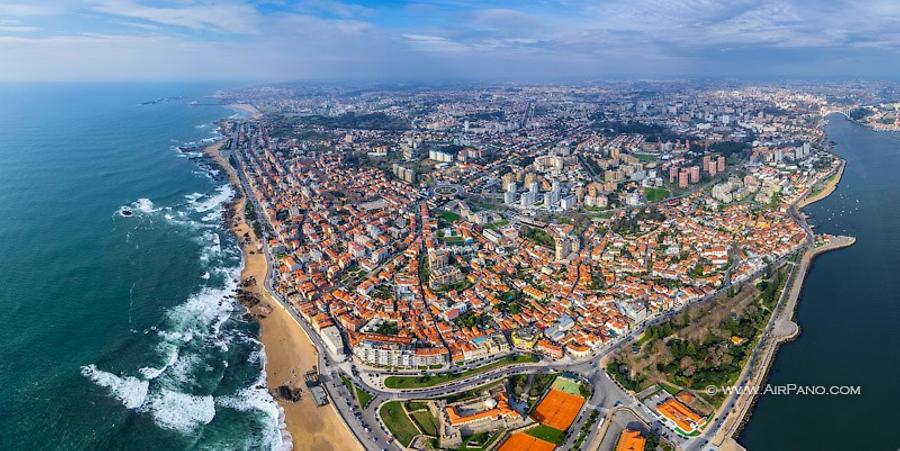
When the sun finally came over, we headed for the Ribeira Embankment. It is the oldest area of Porto with no end to small restaurants and tourist shops. At the same time, there are a lot of slightly unkempt and even abandoned houses — splendour and poverty are neighbours in Porto. Colourful houses stand too close to each other, so we couldn't find a proper approach to the embankment itself: every entrance required permission, and we had to leave our car on an underground parking and have a walk to the embankment with all our equipment.
A splendid view of the Dom Luís I bridge and moored boats loaded with barrels completed the scene. Surprisingly enough, the drone flight did not cause any fuss, as it often happens. Only a couple of local children wanted to have a look at how we launch the drone, another couple of tourists came up with some traditional questions, such as "How far can it fly?" and "How much does it cost?" We managed to fulfill our work filming the Dom Luís I bridge without a single problem. But as for the bridge of Gustave Eiffel, there was certain confusion.
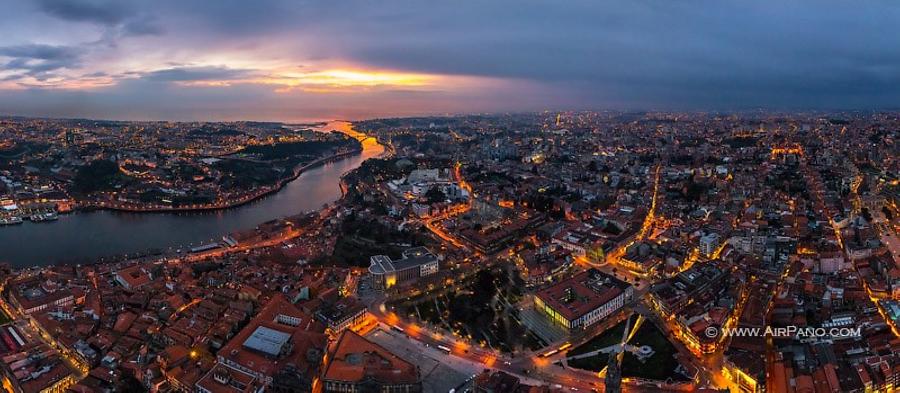
This kind of tracery structured bridges looks better when illuminated by lights at night. We noticed several huge spotlights near the Maria Pia bridge, so we hoped to see a beautiful evening picture. Thus we arrived in advance. Only a kilometer away from the touristic embankment the scene changed dramatically: there were some strange yards, shanty huts, stray dogs. We asked locals about the evening illumination of the bridge. They barely spoke English, but ensured us that the bridge will be illuminated and pointed at spotlights. Well, we decided to wait... Darkness fell, and of course there was not a hint of illumination, the bridge remained dark. Although we could not photograph what we initially wanted, the good thing was that we witnessed a stunning sunset from the ocean side.
The following morning the weather grew worse. Stas decided to stay in the apartment, and I went wandering around the city with my camera. The streets were empty although the rain was gentle. I passed the cathedral and went down to the Old town quarters: narrow streets, small houses standing close to each other, very few people in the streets. Some say that it is not safe to wander along here, but I found this quarter quite friendly. Many buildings are decorated with Azulejos — white and blue coloured tin-glazed ceramic tilework. These techniques were adopted by Portugal from Spaniards at the Moorish period. The mild climate of the country allows using this kind of ceramics not only for decoration of the interiors, but also for the exteriors of whole buildings. For example, the famous Capela das Almas, also widely known as the Saint Catherine Chapel, in 1929 was decorated with Azulejos illustrating the life of Saint Francis of Assisi and Saint Catherine. Around 16,000 tiles were used for this purpose.
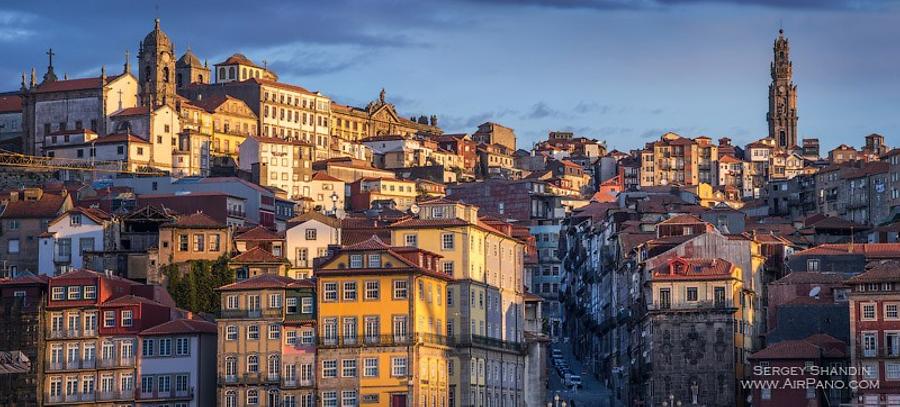
Several truly old trams, which haven't changed since 1872, passed me by. What a genuine time machine! Interiors of trams feature wood and brass. And there is a special rope that you need to pull in order to inform of the stop.
One more legendary unique feature of Porto, in addition to trams and tiles, is port wine. In Russia the reputation of this beverage was significantly damaged because of a disgusting drink of awful quality and having nothing to do with the real port wine had been on sale under this name for a long time. The genuine port wine is born in the Douro Valley, a special guarantee label on a bottle certifies it. 165 grape varieties are grown here, and only 29 of them are recommended for producing of port wine. Although the city of Porto gave the name for this wine, the barrels with this legendary beverage are stored in the vaults in Vila Nova de Gaia — on the other bank of the river.
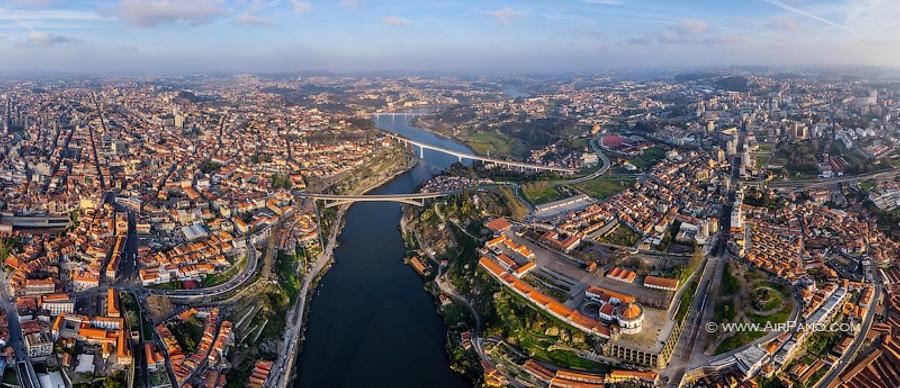
Previously, the barrels with new wine were taken downriver to and from Vila Nova de Gaia in boats, as during the transportation by uneven roads the wine was shaken a lot and it was not good for this kind of product. Nowadays it is carried in trucks, of course. But the boats are still docked along the bank of the river, much to the delight of tourists. Every year a sailing regatta takes place here: port wine makers take part in it, and the boats with square sails race along the river, like it used to be in the ancient times.
The maturation of port wine takes from 3 to 6 years, however certain sorts can take much more time to be produced. The final product is a blend of not less than a dozen of different wines, making the taste of port wine fresh and dense at the same time and featuring the richness of the bouquet. It is recommended to buy it in small shops that can easily be found in Porto. Hundreds, if not thousands, brands and sorts of wine are sold here and merchants can describe each one in the smallest details. You can also buy delicious local bread, cheese and fruit here.
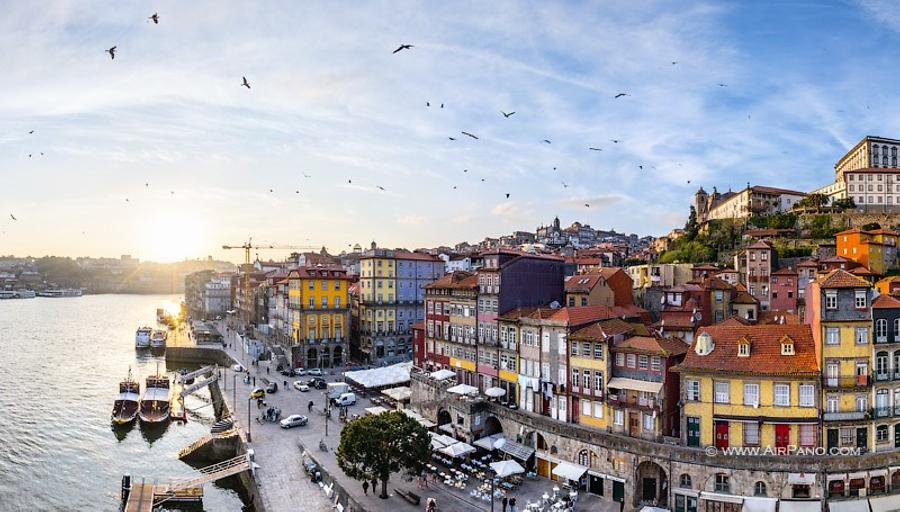
If you ask me what is worth visiting in Porto in the first place, I will say — just have a walk around, and the city will bring you to the right place: it actually makes no difference because finding a particular itinerary in the tight web of countless streets seems to be impossible. Only a reliable landmark of the Torre dos Clérigos can help not to get lost: it can be seen from almost any point of the city. The historical center of Porto is on the list of UNESCO cultural heritage and it deserves this status: every corner is a feast for eyes. Meanwhile a car is not the best choice to move around the city: continuous traffic jams and critical lack of parking lots (considering that the parking is fee-paying). Although the hilly landscape of the city can be challenging for an unprepared traveller, it is still better to walk on foot.
Bridges, embankments, a breath of the nearby ocean, ancient houses stuck to each other, boats with barrels docked near the bridge... It seems that the time has stopped in Porto. We hope to share the special charm of this city through our panoramas.